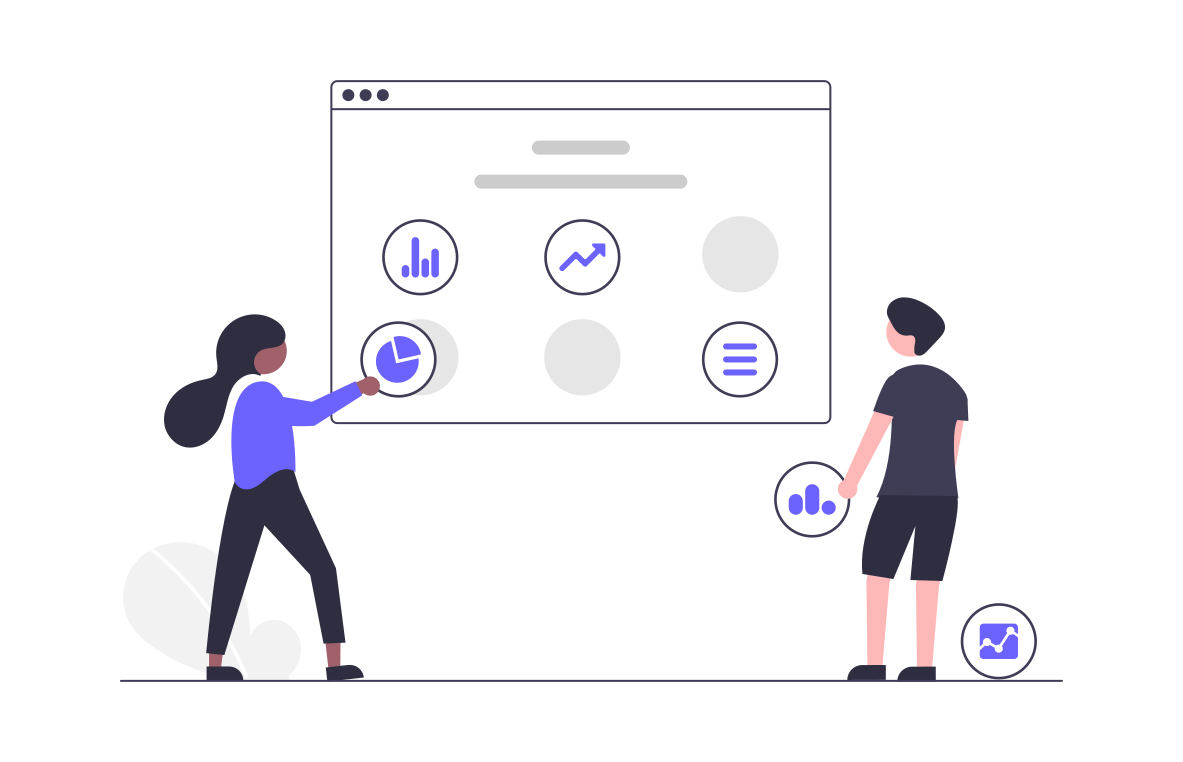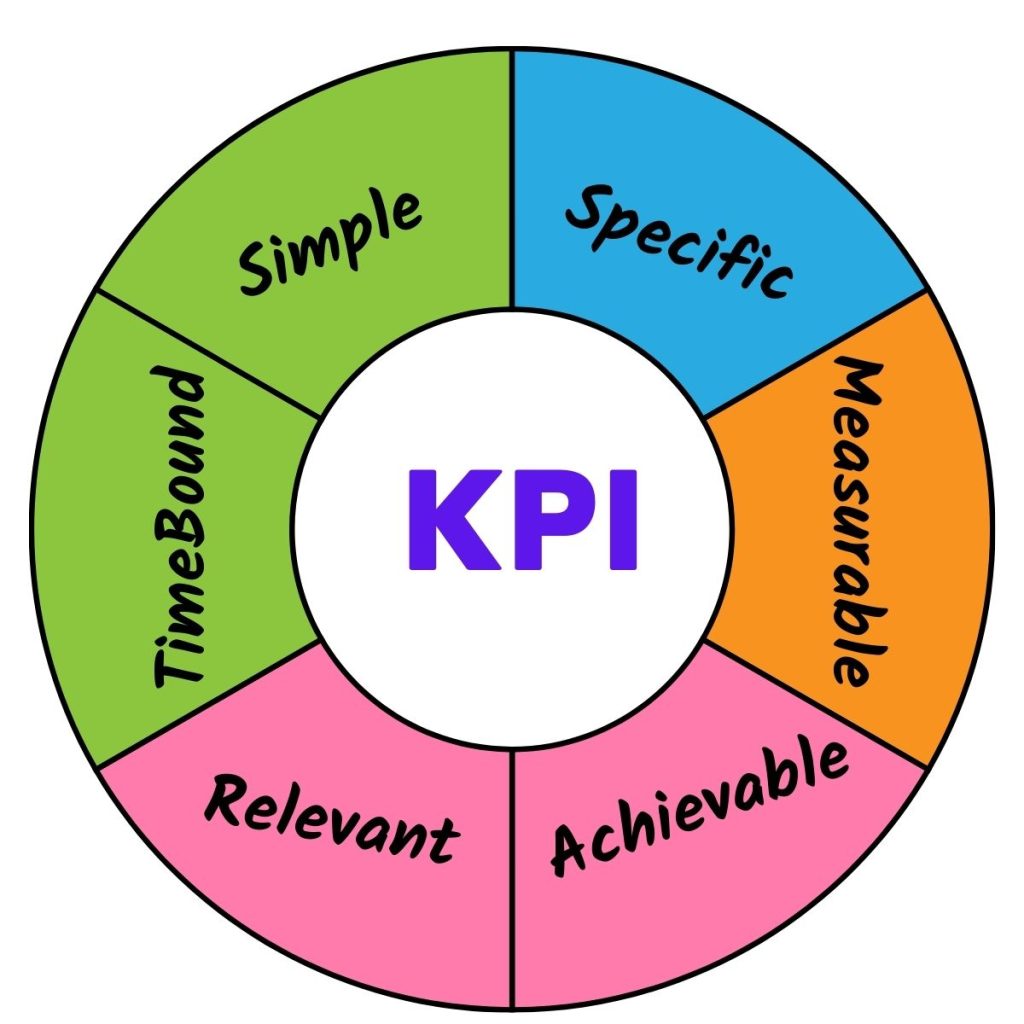
In today’s competitive business landscape, measuring performance is crucial for organizations to track progress, identify areas for improvement, and achieve their goals. Key Performance Indicators (KPIs) play a vital role in this process by providing specific metrics that enable effective performance measurement. In this article, we will explore how to measure performance using KPI metrics and the importance of selecting the right metrics. Let’s dive in!
Why choosing the right KPI is important
There is a prevailing misconception that business growth solely revolves around expanding revenue and pursuing new clients. While expanding your customer base is important, it should not come at the expense of your existing clients. Neglecting the needs and satisfaction of your current clients can have detrimental effects on your business in the long run.
Building a successful business requires a balanced approach. It entails defining growth goals that not only benefit your organization but also prioritize the interests of your clients. By aligning your business objectives with client-centric values, you can create a sustainable growth strategy that fosters long-term success.
It’s said that ‘what gets measured is managed’. Selecting the right Key Performance Indicators (KPIs) is crucial for fostering this balanced approach to business growth while prioritizing client-centric goals. When you track KPIs that are not directly relevant to your business objectives or client-centric goals, it can lead to a misaligned focus. Your efforts, resources, and decision-making may be directed towards areas that don’t contribute significantly to your desired outcomes. This can result in wasted time, energy, and resources, hindering your ability to achieve meaningful growth and client satisfaction. KPIs are meant to provide valuable data and insights to guide your strategies and actions. If you are monitoring the wrong metrics, you may not have access to the information needed to make data-driven decisions. This can result in decisions based on assumptions or incomplete information, leading to suboptimal outcomes.
To avoid these negative consequences, it’s essential to carefully select KPIs that align with your business objectives and client-centric goals. Regularly review and assess the relevance and effectiveness of your chosen metrics. Ensure they provide meaningful insights and drive the desired outcomes. Adjust and refine your KPIs as needed. This ensures you are tracking the right indicators to foster business growth while prioritizing client satisfaction.
How to measure performance with KPI metrics
STEP1: Select 1 or 2 Key Metrics That Drive Your Goals
Each business has unique objectives and areas of focus. Select KPIs that reflect the specific aspects of your business that you want to improve or excel in. While it’s helpful to consider industry benchmarks and competitors’ KPIs as references; it’s essential to prioritize metrics that directly align with your strategic goals.
Differentiate whether something can be measured and whether it should be measured. Hence do not make the mistake of measuring everything just because its easy to measure. Or because its popular among your competitors, but focus on its relevance to your business.
Ask these questions before selecting the KPI:
- Can the progress of this KPI be measured?
- Can you control this KPI?
- What are you trying to achieve by tracking this KPI? Does it add value to your organization? OR Does it add value to your customers?
- Does the KPI drive growth?
If the answer to most of these questions is “yes,” then its a good KPI for your business. If the answer is “no,” then you have to reconsider using that KPI.
To achieve this, just follow these principles. The ‘KISS’ Principle (Keep it Simple Stupid!) and the ‘SMART’ Principle (Specific, Measurable, Achievable, Relevant, and Time-based). KPI should be simple and easily understandable. Simplicity is surely important, but at the same time, it should be Specific, Measurable, Achievable, Relevant, and Time-based.

So in short, your KPI should be: Simple, Specific, Measurable, Achievable, Relevant and Time-bound
Example:
Let’s say your goal is to grow your business revenue. Instead of tracking the general revenue growth, a better KPI would be to “increase the revenue by 30% from new product launches” by 30% in the next quarter.” This KPI is more specific. As it focuses on revenue generated specifically from new product launches, and it sets a clear target to work towards. Also, it is simple, measurable, achievable, and time-based. By monitoring the revenue from new product launches, you can assess the success of your product development and marketing efforts. If, by the end of the quarter, the revenue from new product launches has grown by 35%, it indicates that your business is performing well in terms of introducing and monetizing new offerings.
STEP 2: Regularly monitor and report the selected metrics
It is essential to keep an eye on your KPIs regularly and how well they’re doing daily, weekly, monthly or quarterly. Tracking KPIs regularly creates a culture of continuous improvement within an organization. It encourages teams to focus on performance, set targets, and work towards achieving them. By regularly monitoring KPIs, you can identify areas for improvement, track progress over time, and adjust strategies to drive better results. It promotes a proactive approach to performance management.
Previously, spreadsheets were widely used by organizations to track KPIs, but they possessed challenges like manual effort, version control, data entry mistakes, performance and scalability issues. To overcome these drawbacks, organizations often turn to dedicated business intelligence tools or dashboard solutions that provide automated data integration, real-time visualization, enhanced collaboration, and scalability. These tools address the limitations of spreadsheets and provide a more streamlined and efficient approach to KPI tracking and analysis.
One of the significant advantages of using BI dashboards for KPI tracking is the automated data refresh functionality. This automation ensures that your KPIs are always based on the latest information, eliminating the need for manual data entry or updates. This saves time and effort, allowing you to focus on analyzing the metrics and deriving insights rather than spending time collating and updating data manually. Also, automated dashboards help to have round-the-clock access to metrics, which makes tracking KPIs regularly easy.
Example:
Usually, the manual process of working on data makes day-to-day progress and tracking complicated. This leads to losing track of the KPIs. Numbers are complicated so make a dashboard that clearly and easily shows these numbers as a KPI and visually represents them. So adopt, no-code BI tools (like InsightDials, Klipfolio, ChartMoghul, etc) that automate these manual tasks and enable you to track your KPIs in real-time on-demand. Hence, with the data available on-demand, conduct review of the KPIs regularly.
Example:
Usually, the manual process of working on data makes day-to-day progress and tracking complicated. This leads to losing track of the KPIs. Numbers are complicated so make a dashboard that clearly and easily shows these numbers as a KPI and visually represents them. So adopt, no-code BI tools (like InsightDials, Klipfolio, ChartMoghul, etc) that automate these manual tasks and enable you to track your KPIs in real-time on-demand. Hence, with the data available on-demand, conduct review of the KPIs regularly.
STEP 3: Your KPIs should improve your North Star Metric
Choosing the right North Star metric is essential for effective data-driven management of your organization. It serves as a guiding star, representing the ultimate goal and the desired outcome of your business. All other Key Performance Indicators (KPIs) should align and contribute to the improvement of this North Star metric. When all the other KPIs are performing well and positively influencing the North Star metric, it indicates that your organization is on the right track and progressing towards its primary goal. However, if your KPIs show positive movement, but the North Star metric does not, it’s a clear indication that you might have chosen the wrong KPIs.
To ensure that your KPIs are effective, it is crucial to regularly evaluate their relationship to the North Star metric. Consider whether they are truly influencing and improving the desired outcome. If not, it may be necessary to reassess and adjust your KPIs to ensure they have a direct impact on the North Star metric and accurately reflect the progress towards your ultimate goal.
Example:
For example: For an eCommerce company, if the North Star metric is “the number of packages delivered”, then the intermediate KPIs should directly impact or increase the north star metric. KPIs like ‘increase referral customers by 20%’, ‘reduce cart abandonment rate by 15%’ etc will directly improve the performance of your north star metric.
STEP 4: Accountability of the KPIs
Ownership is a critical factor in effectively actioning KPIs within businesses. When there is a lack of ownership, teams may dismiss key indicators as not within their responsibilities. This can lead to incorrect measurement and implementation of KPIs.
To mitigate this, it is essential to assign a single person as the owner of each relevant KPI. This does not mean that they will be solely responsible for driving the indicator forward, as KPIs often require a team effort. However, having a designated lead or owner centralizes the responsibility, streamlining communication and decision-making processes.
By establishing clear ownership from the beginning, a sense of accountability is fostered. This strengthens the foundations of your overall strategy and plans, ensuring that the relevant KPIs are actively monitored, measured, and acted upon. With a clear owner for each KPI, the risk of improper implementation or measurement is significantly reduced, leading to more effective utilization of key indicators for driving business success.
Example:
Suppose your KPI is to bring down the aged accounts receivables. In this case, assigning ownership of this KPI to the revenue operations manager would be a logical choice. As the owner of this KPI, the revenue operations manager can take responsibility for collecting the aged payments and ensuring efficient billing and collection practices.
STEP 6: Act on the KPIs
KPIs are a valuable tool when they drive action. They serve as indicators of team, department, or business performance, but their true purpose lies in inspiring action and facilitating change.
It is crucial to ensure that your KPIs are not merely idle measurements. They should actively contribute to improvements and guide your actions towards tangible outcomes. If your KPIs are not driving meaningful change, you risk wasting time and effort on metrics that lack true impact.
By aligning your KPIs with actionable insights, you can leverage them to unlock the potential for growth and success across your organization. Your KPIs should act as catalysts for improvement, providing the foundation for data-driven decision-making and enabling you to continuously refine and enhance your business operations.
Example:
Below are a few pointers to derive valuable insights from your KPIs:
- Set benchmarks and targets: Establish benchmarks and targets for each KPI. These act as reference points for performance evaluation.
- Regularly track and monitor: Continuously track and monitor your KPIs to capture trends and patterns over time. Use data visualization tools or dashboards to display KPI data in an easily understandable format, allowing you to quickly identify patterns, anomalies, or trends that provide insights into your performance.
- Analyze data holistically: Look beyond the surface-level numbers and analyze the underlying data in detail. Drill-down your KPIs by various dimensions such as time periods, customer segments, or product lines to get valuable insights that can guide decision-making.
- Foster a data-driven culture: Encourage a culture of curiosity and data-driven decision-making within your organization. Encourage teams to explore KPI data, ask questions, and collaborate to extract insights collectively. Regularly share insights derived from KPIs across teams, fostering cross-functional learning and encouraging a data-driven mindset.


